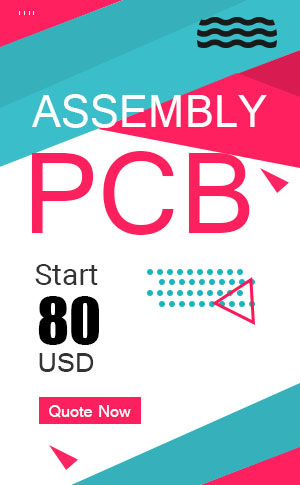General, quoting & support.
Add: Building E, No.58, Nanchang Road, Xixiang , Baoan District Shenzhen City, Guangdong, China
Tel : 0755-27348887
Fax : 0755-27349876
E-mail : svc@pcbastore.com
Identifying Electronic Components on a Circuit Board
PCBA Store / 2025-07-31
Contents [hide]
Why Identifying Components Matters
Knowing how to spot electronic components on a circuit board is key for anyone working in electronics design, assembly, or repair. Recognizing these parts is vital during the designing, assembling, deploying, and fixing stages of the PCB production process. Whether handling a basic LED driver or a complex microcontroller system, understanding each component’s role and location is very important.

Circuit Board Components
A circuit board has many parts, like resistors, capacitors, inductors, diodes, transistors, ICs, and connectors. Each part has a special job. Resistors manage current flow. Capacitors hold electrical energy for a short time. Inductors resist current changes. Diodes let current flow one way only. Transistors can boost signals or work as switches. Integrated circuits (ICs) pack many functions into one chip.
Most electronic components have markings or writing on them. These show their value or part number. For example, resistors have color bands to show resistance. Ceramic capacitors have number codes. ICs usually have part numbers printed on them.
Active and Passive Elements
Circuit board components split into two main groups: passive and active. Passive components, like resistors (R), capacitors (C), and inductors (L), don’t make energy. They store or use it up. Active components, like diodes (D), transistors (Q), and ICs (U), need outside power to work. They can boost signals or control current flow.
Other less common parts exist on a PCB too. For instance, connectors link the circuit board to outside sources electrically.
Through-Hole and Surface-Mount Components
Modern PCBs use two main mounting types: through-hole and surface-mount.
Through-hole components have leads soldered into holes on the circuit board. These are good for strong mechanical holds or prototyping because they’re easy to handle.
Surface-mount components don’t always need leads. They attach directly to the PCB surface. Their small size makes them great for high-density designs.
 Reference Designators
Reference Designators
A reference designator is a code with letters and numbers. It identifies a specific component on a PCB. These codes help find parts on schematics and physical boards during assembly or repair.
Key Rules for Assigning Reference Designators
Each component type has its own letter code:
· R: Resistor
· C: Capacitor
· L: Inductor
· D: Diode
· Q: Transistor
· U: Integrated Circuit
· J: Jack Connector
· K: Relay
· T: Transformer
Numbers follow the letters. This helps pick out a component from others of the same type.
Identifying Polarized Electronic Components on a Circuit Board
Some electronic parts need correct polarity for installation. Circuit boards have both polarized and non-polarized components. Soldering must follow their polarity.
The board often has + and - signs to show positive and negative leads. This is common for electrolytic capacitors and diodes. For one-way parts like diodes, + and - or A and K mark the anode or cathode.
Identifying the Orientation of Electronic Components on a Circuit Board
Orientation matters a lot for ICs like QFPs (Quad Flat Packages) or QFNs (Quad Flat No-lead packages). For parts like SOC ICs or QFP packages, correct orientation is key for installation.
These components often have a pin 1 number or a solid dot to show the first pin. This helps automated pick-and-place machines line them up right during assembly.
PCBAStore - A Trusted Printed Circuit Board (PCB) Fabrication and Assembly Store
PCBAStore is a top PCB manufacturing and assembly company in China. It has provided full electronic manufacturing solutions for 16 years. The company meets needs across industries like robotics, medical, automotive, communication, industrial automation, and consumer electronics. It focuses on cost-effective, high-quality, and timely delivery.
PCBAStore handles everything from PCB design and layout to prototyping, mass fabrication, and assembly. It offers Flex PCB, custom designs, and turnkey solutions, including low-volume PCB assembly. With features like 24-hour express delivery, 100% refund for quality issues, and advanced SMT lines with AOI/X-ray inspection systems, PCBAStore is a reliable partner worldwide.
FAQ
How to start identifying parts on a circuit board?
Look at markings on each component. Use reference designators like R1 for resistors or U2 for ICs. Check datasheets for help.
What tools help identify small SMD parts?
A magnifying glass or digital microscope works well. Online databases also make identifying small surface-mount parts easier.
Can a prototype be assembled quickly?
Yes. PCBAStore offers fast PCB prototyping services. It delivers high-quality, low-cost PCBs in 24–48 hours, depending on the project.
What happens if polarized parts are installed wrong?
Wrong installation can harm the component and circuit. Always follow polarity markings (+/-) carefully when soldering.
Where to get both fabrication and assembly done?
PCBAStore is a one-stop shop. It offers design support through final box-build assemblies.
Previous article:LGA vs. PGA: What's the Difference and Which is Better?







